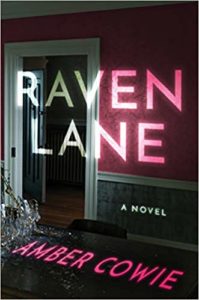Two weeks before my first novel was released, I had plans. Big ones. I was set to host four book launches and had pre-written dozens of enthusiastic posts on social media. Late at night, I furtively typed my own name into search engines hoping that early reviews had miraculously appeared. I was so eager to be an actual author that I changed the name of my wireless network to the title of my book. Fourteen months had passed since I had signed my deal. I was ready for it to be real.
Then, six days before the publication date, my brother died.
When I walked into the room he had last inhabited, I felt sick. Even though I had never been there, the space was nearly identical to a scene I had written in my book. Closed blinds dimmed the daylight just as I had described. The clutter contained the smell of dankness and despair. An unexplained pool of blood stained the floor of the adjoining bathroom.
The sister in my novel who had lived in that invented apartment was based on my brother. And just like him, she died.
I felt guilty in a way I couldn’t possibly explain, as if I had predicted his death, or worse, manifested it.
My sister wrote his eulogy. I could barely construct a sentence. Everything I wrote felt tainted. I didn’t think anyone else could understand it. Until I started reading about Lois Duncan and Shirley Jackson.
* * *
Three months after my brother’s funeral, I happened to find a profile of Lois Duncan, one of my most beloved childhood authors, in The New Yorker. At the time, it was difficult to think straight, let alone write, so I thought that reading about an author who had also worked with dark material would be comforting in an odd way. Duncan was the master of making mediocre details macabre, and as far as I knew, she had made a successful career out of it. But as I read further, I found that she too was haunted by the idea that her writing had hurt someone she loved.
Suddenly, I wasn’t alone, which was both reassuring and terrifying.
For decades, Lois Duncan wrote suspense stories which often featured young women in danger. Duncan dedicated her thirteenth book to her daughter, Kaitlyn Arquette. One month after it was published, Arquette was murdered on the streets of Albuquerque in a manner that was eerily similar to a scene in the novel.
In an effort to document the crime, Duncan published a true crime story about the death. I immediately ordered it. When it arrived, the pages were heartbreaking to read and seemed more of a study in grief than an investigation. Like me, Duncan felt as if the world she was living in after her daughter’s death echoed the people and places she had developed in her work. A woman she contacted for help bore such an uncanny resemblance to one of her characters that Duncan stated, “it wasn’t that I had met her before, I had created her”.
The sentence unnerved me. It was exactly how I had felt in my brother’s room.
There was more. A journalist who wrote about her daughter’s death had the same name as one of Duncan’s characters. Most chillingly, the police sketch of a person of interest in her daughter’s death was nearly identical to the hit man on the cover of the book Duncan had dedicated to her. These coincidences prompted Duncan to ask the same question I was asking myself. What if the act of writing about danger, death and harm actually created the conditions for it to happen?
Was it sorrow that was causing us both to draw the same conclusion? Or something else?
Even though I was also in a disordered state, the raw emotion that drove Duncan’s narrative gave me pause. Was it sorrow that was causing us both to draw the same conclusion? Or something else? Still, I was riveted by her belief that she had glimpsed the future. But when she asked herself: “might a person who was involved in a creative career . . . inadvertently pull up fragmented flashes of material…that had not been played out yet?”—I became more conflicted. Her argument was both hard to accept and difficult to ignore.
On a rational level, I knew that after years of seeing my brother sucked further into addiction, it was no surprise that I had written a tragic end to my novel. But like Duncan, I felt troubled by how close I had come to the truth. She believed that she accessed something unthinkable in her work: something terrifying and possibly evil.
And, despite my desire to deny it, so did I.
* * *
In search of distraction, I picked up a critically acclaimed biography of another author, Shirley Jackson. Inside, Jackson was quoted as saying “so long as you write it away regularly, nothing bad can really hurt you”. At first, the phrase was a salve to me as I tried to mourn my brother without slipping into insanity. Jackson’s suggestion that the act of writing about him hadn’t been a betrayal but a necessary catharsis was something that I desperately needed to hear.
But as the story continued, I realized that despite decades of following her own advice, Jackson spent most of the last years of her life gripped by anxiety. At the age of forty-eight, she died unexpectedly in her sleep as mysteriously as one of her constructed heroines.
Like Duncan, Jackson’s last novel, We Have Always Lived in the Castle, laid a strange blueprint for the author’s own life. In the novel, two sisters find themselves relegated to a home they can no longer leave, thanks to increasingly hostile and potentially violent forces right outside their door. After the publication of the book, Jackson’s own fear trapped her in home, unable to collect the mail, buy groceries or even smell the flowers in her own garden. She lived in a world bound by four walls, unable to enter and exit at will just like the characters she had created. Even the idea of travel sent her into a “paroxysm of terror”.
Jackson was a prolific diary and letter writer. In her final days, these sources show a portending sense of loss and mystery. She wrote of “withdrawing from something important” that she “cannot in good faith write about as though it were real.” One diary entry details a dream of a painting that shows a woman “sliding out through a parting in the background” and disappearing. Her last letter to her agent states that she is about to go on “a wonderful journey where she will meet many new people” though she had no travel plans arranged. Days later, Jackson died in her sleep, leaving her family, friends and fans far behind her.
When I closed the book, I realized that Jackson’s writing hadn’t take away the things that hurt her. It just gave her a place to contain them, albeit temporarily, just as it had for Lois Duncan and myself.
* * *
Jackson, Duncan and I created stories that both reflected and predicted the things that scared us the most. I’m still not sure exactly how it happened. Lately, I’ve wondered if our work was a cross between a coping mechanism and something like the clairvoyance Duncan describes.
My brother was an addict, Duncan sensed her daughter kept secrets from her, and Jackson, in the grips of agoraphobia, had been warned about the effects of her poor physical health. Rather than letting an unbearable possibility loom before us with no answer and no hope of defeat, we created, named and came to terms with the worst possible future. It allowed a kind of closure, confined in the pages of a book.
But our fear was like water and our writing was only a temporary dam. The real life flood still found a way in and our books became a record of what we hoped would never occur. There is a price to be paid for fictionalizing fear. It makes it seem as if the terrible was inevitable.
I didn’t hold back when I drafted Rapid Falls. I was trying to get rid of the pain of my brother’s addiction, my family’s sorrow and my own helplessness. When it was done, I sought my brother’s permission before I sent it to a publisher. Now I realize that I shouldn’t have asked him anything at all. Instead, I should have told him why I wrote it the way I did.


















